Superb, rare and large drawing representing a Portrait of Marie d'Orléans-Longueville, Duchess of Nemours, Princess of France.
The drawing is perfectly done. Wonderful work of light on the lace in particular which seems to come out of the painting thanks to its bluish tint. The shadow play is magnificent.
On thick marked paper.
Drawing Dated 1891 and signed.
The Signature is probably “Sieur Duval”.
Very good Made from the magnificent painting by Hyacinthe Rigaud (1659-1743), painter of the 18th century model dated 1707.
The engraver Pierre Drevet (1663-1738) also engraved this work.
The work is “Mary by the grace of God, sovereign of Neufchâtel and Vallangin, duchess of Nemours” / « Marie par la grâce de Dieu, souveraine de Neufchâtel et Vallangin, duchesse de Nemours »
of the work: Half-legged, seated, turned three-quarters to the left, looking straight on, the princess, whose left arm is folded across her chest, holds her crown placed on the table with her right hand. She is dressed in dark court attire, her head covered with a headdress whose tails are tied on the chest. A curtain and the base of a column constituting the second plan.
Marie de Nemours, born in 1625 and died on June 16, 1707, is sovereign princess of Neuchâtel and Valangin. Daughter of Henri II of Orléans-Longueville and Louise de Bourbon-Condé, Mademoiselle de Soissons, she was known until her marriage under the name Marie d'Orléans, Mademoiselle de Longueville.
Marie d'Orléans, only daughter of the Duke of Bourbon and Longueville, married Henri II of Savoy, last Duke of Nemours, in 1657. The court was surprised that the richest heiress in France agreed to marry this duke without possessions and without consideration, staid and boring. The Duke of Nemours suddenly fell ill and died on January 2, 1659. The Duchess of Nemours survived him for a long time. In 1694, she was recognized as sovereign of the principality of Neuchâtel and Vallangin (Switzerland), by the states of the country, to the exclusion of the Prince of Conti. She died in Paris on June 16, 1707, at the age of 82. Five months later, despite claims of misconduct by the suitors, the court of these same states awarded this small sovereignty to the King of Prussia. The Duchess of Nemours was said to be miserly and carefully hid her rank under cheap clothes. She was devout but suspicious and often changed her confessor. She left Memoirs, recognized to be remarkable for their accuracy, fidelity and charm of style.
Hyacinthe Rigaud, famous painter to King Louis XIV, was born in 1659 and died in 1743.
He was the major portraitist of the king and his Court at Versailles. Rigaud fixed for three centuries the image of the official portrait of European courts.
On the advice of Le Brun, he devoted himself to portraiture, a genre which he elevated to its highest expression. He attracted the attention of the king and the Court with the portrait of Monsieur, brother of the sovereign, in 1688 then of Philippe II of Orléans, the following year. Louis A true emblem of the French monarchy, it definitively freezes the image of the camera portrait: column and landscape in the background, shimmering drapery, solemn pose, intense colors. French and European sovereigns continued to be portrayed in this way until the 19th century. Rigaud repeats his performance for Louis XV in 1730.
Superbo, raro e grande disegno raffigurante un Ritratto di Marie d'Orléans-Longueville, Duchessa di Nemours, Principessa di Francia.
Il disegno è perfettamente eseguito. Splendido il lavoro di luce sul pizzo in particolare che sembra uscire dal dipinto grazie alla sua tonalità bluastra. Il gioco di ombre è magnifico.
Su carta spessa e marcata.
Disegno datato 1891 e firmato.
La firma è probabilmente "Sieur Duval".
Molto buono Realizzato dal magnifico dipinto di Hyacinthe Rigaud (1659-1743), pittore del XVIII secolo modello datato 1707.
Anche l'incisore Pierre Drevet (1663-1738) ha inciso quest'opera.
L'opera è "Maria per grazia di Dio, sovrana di Neufchâtel e Vallangin, duchessa di Nemours" / " Marie par la grâce de Dieu, souveraine de Neufchâtel et Vallangin, duchesse de Nemours "
dell'opera: Semisdraiata, seduta, girata di tre quarti verso sinistra, con lo sguardo fisso, la principessa, il cui braccio sinistro è ripiegato sul petto, tiene con la mano destra la corona posata sul tavolo. È vestita in abiti scuri di corte, con il capo coperto da un copricapo le cui code sono legate sul petto. Una tenda e la base di una colonna costituiscono il secondo piano.
Marie de Nemours, nata nel 1625 e morta il 16 giugno 1707, è principessa sovrana di Neuchâtel e Valangin. Figlia di Enrico II d'Orléans-Longueville e di Luisa di Borbone-Condé, mademoiselle de Soissons, fino al matrimonio era conosciuta con il nome di Maria d'Orléans, mademoiselle de Longueville.
Maria d'Orléans, unica figlia del duca di Borbone e di Longueville, sposò nel 1657 Enrico II di Savoia, ultimo duca di Nemours. La corte si stupì del fatto che la più ricca ereditiera di Francia accettasse di sposare questo duca senza possedimenti e senza considerazione, stazionario e noioso. Il duca di Nemours si ammalò improvvisamente e morì il 2 gennaio 1659. La duchessa di Nemours gli sopravvisse a lungo. Nel 1694 fu riconosciuta sovrana del principato di Neuchâtel e Vallangin (Svizzera) dagli Stati del Paese, ad esclusione del Principe di Conti. Morì a Parigi il 16 giugno 1707, all'età di 82 anni. Cinque mesi dopo, nonostante le accuse di cattiva condotta da parte dei pretendenti, la corte di questi stessi Stati assegnò questa piccola sovranità al re di Prussia. Si dice che la Duchessa di Nemours fosse avara e nascondesse accuratamente il suo rango sotto abiti di poco valore. Era devota ma sospettosa e cambiava spesso confessore. Lasciò delle Memorie, riconosciute notevoli per la loro accuratezza, fedeltà e fascino dello stile.
Hyacinthe Rigaud, famoso pittore del re Luigi XIV, nacque nel 1659 e morì nel 1743.
Fu il principale ritrattista del re e della sua corte a Versailles. Rigaud fissò per tre secoli l'immagine del ritratto ufficiale delle corti europee.
Su consiglio di Le Brun, si dedicò alla ritrattistica, un genere che elevò alla sua massima espressione. Attirò l'attenzione del re e della Corte con il ritratto di Monsieur, fratello del sovrano, nel 1688 e di Filippo II d'Orléans, l'anno successivo. Luigi Vero e proprio emblema della monarchia francese, congela definitivamente l'immagine del ritratto fotografico: colonna e paesaggio sullo sfondo, panneggio scintillante, posa solenne, colori intensi. I sovrani francesi ed europei continueranno a essere ritratti in questo modo fino al XIX secolo. Rigaud ripete la sua performance per Luigi XV nel 1730.
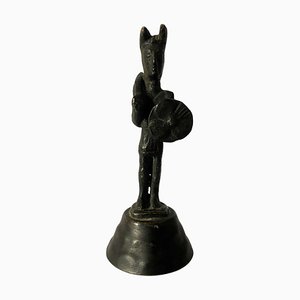
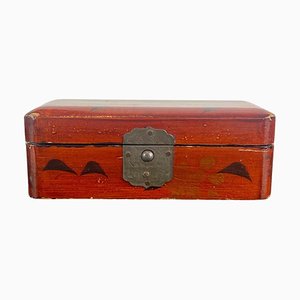
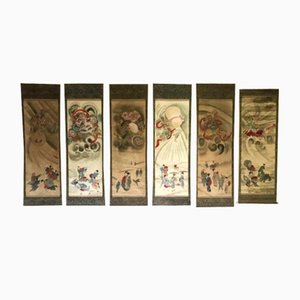
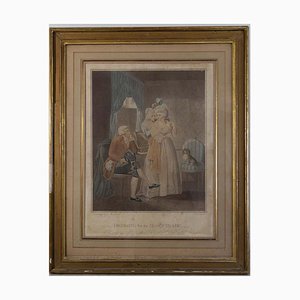


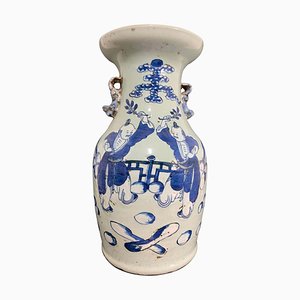

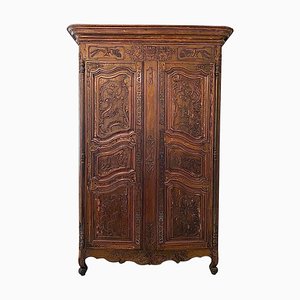
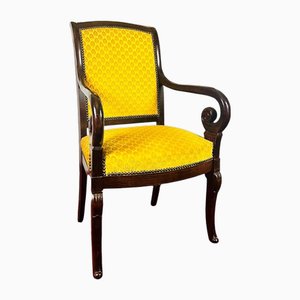
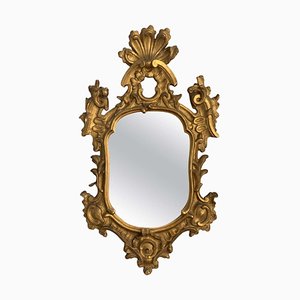
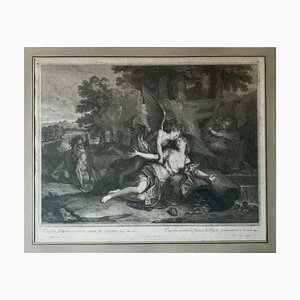

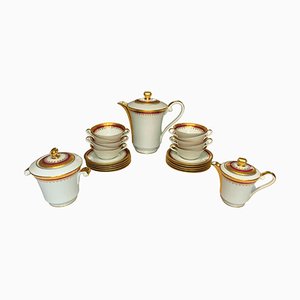
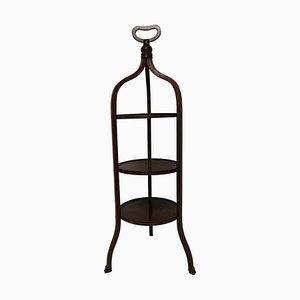
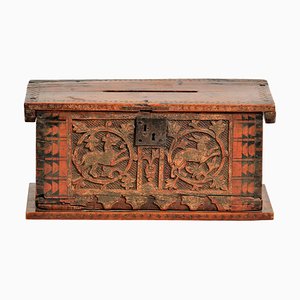

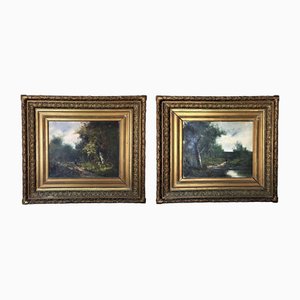
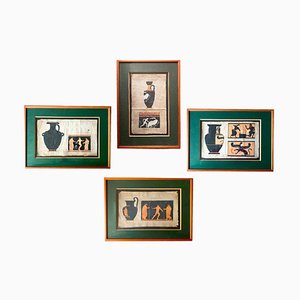
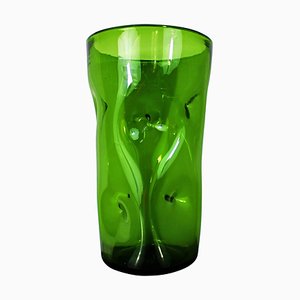
Contattaci
Fai un'offerta
Abbiamo notato che sei nuovo su Pamono!
Accetta i Termini e condizioni e l'Informativa sulla privacy
Contattaci
Fai un'offerta
Ci siamo quasi!
Per seguire la conversazione sulla piattaforma, si prega di completare la registrazione. Per procedere con la tua offerta sulla piattaforma, ti preghiamo di completare la registrazione.Successo
Grazie per la vostra richiesta, qualcuno del nostro team vi contatterà a breve.
Se sei un professionista del design, fai domanda qui per i vantaggi del Programma Commerciale di Pamono